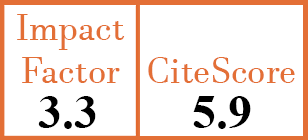Full Papers
Association of salivary S. mutans colonization and mannose-binding lectin deficiency with gender in Behçet`s disease
G. Mumcu, N. Inanc, S.Z. Aydin, T. Ergun, H. Direskeneli
CER128
2009 Vol.27, N°2 ,Suppl.53
PI 0032, PF 0036
Full Papers
Free to view
(click on article PDF icon to read the article)
PMID: 19796530 [PubMed]
Received: 06/01/2009
Accepted : 26/03/2009
In Press: 02/12/2009
Published: 02/12/2009
Abstract
OBJECTIVES:
The present study aimed to investigate the interactions among salivary S. mutans colonisation, serum mannose binding lectin level (MBL), oral ulcer activity and disease course in patients with Behçet`s disease (BD).
METHODS:
One hundred and six BD patients, 25 patients with rheumatoid arthritis (RA) and 42 healthy controls (HC) were included in the study. BD patients were grouped as active (n=52) or inactive (n=54) according to oral ulcer status of the previous 3 months. Salivary colonisation of S. mutans levels were investigated by standard Caries Risk Test (CRT) Bacteria kits (Ivoclar, Vivadent). S. mutans colonies were categorized as high (≥105 colony forming unit (CFU)/ml of saliva) or low (<105 CFU/ml). Serum mannose binding lectin (MBL) levels were measured by ELISA.
RESULTS:
High levels of salivary S. mutans colonisation was significantly more present in BD (50%) than HC (28.6%)(p=0.039), whereas no significant difference was observed between RA and other groups (p>0.05). S. mutans presence in saliva was associated with oral ulcers (61.5% in patients with active oral ulcers vs 38.9% in inactives) (p=0.020). S. mutans colonisation in saliva was significantly higher among male BD patients with a severe disease course than a milder disease (p=0.04). Increased salivary S. mutans colonisation was also related to very low serum MBL (<100 ng/ml) in BD compared to controls (p=0.04).
CONCLUSIONS:
The relationship between increased presence of S. mutans and MBL deficiency with active disease pattern may indicate an impaired innate immune response in BD patients which may predispose to oral infections and a severe disease course.


